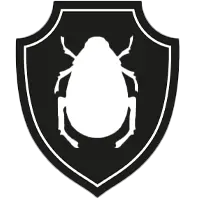Hi there, in my line of work, I’ve encountered numerous questions from worried homeowners, but one that comes up quite frequently is, “Do mice eat nuts?” It might seem like a straightforward query, but as with many things in nature, the answer is a bit more complex.
After reading this article, you’ll gain a deeper understanding of mice dietary preferences, their love (or lack thereof) for nuts, and how to safeguard your home from these pesky invaders. So, let’s get started and unravel the curious case of mice and nuts.
Do mice eat nuts?
Yes, mice do eat nuts. They are quite opportunistic feeders. This means they won’t shy away from any source of nutrition readily available, including nuts. So, if they stumble upon a stash of nuts in your home, there’s a high chance they will feast on them.
The primary reason mice are attracted to nuts is their high energy content. Mice need a lot of energy to sustain their high metabolic rates and nuts, packed with healthy fats, proteins, and calories, provide exactly that. They’re like the perfect fast food for our tiny invaders.
Another factor is the hard, crunchy exterior of many nuts. Mice have continuously growing incisors and gnawing on hard substances like nuts helps them keep their teeth from overgrowing.
So, in essence, if nuts are accessible to mice in your home, they will indeed consume them. But it’s important to remember that nuts are not their only food source.
In the next section, we’ll explore more about the dietary preferences of mice, giving you a broader perspective of what these creatures may be attracted to within your home. This understanding will be essential for effective pest control strategies.
Understanding mice dietary preferences: A broader perspective
Before we delve deeper into the world of mice and their eating habits, it’s important to note that while nuts do play a part in their diet, they are just one small piece of a much larger dietary puzzle.
Omnivorous nature of mice: What they really eat
Mice are omnivores, meaning they consume a wide variety of foods. They are adaptable and versatile in their diet, feeding on anything from fruits, grains, and seeds, to insects, caterpillars, and even their own kind in extreme circumstances! While they will eat nuts if given the opportunity, they are far from being the only food source for these critters.
Mice eating habits and their influence on your home
Understanding the eating habits of mice can make a significant difference in dealing with a mice infestation. Mice have a tendency to nibble on different food sources, often leaving behind partially eaten items and moving on to the next.
This is why you might notice small bite marks on a range of different foods in your pantry, not just on nuts. Additionally, their preference for high-calorie foods could lead them to target not just your nut stash, but also other pantry staples like cereal, rice, and chocolate.
By understanding the omnivorous and nibbling nature of mice, you can better anticipate their movements, protect your food, and, most importantly, plan effective strategies to prevent or deal with an infestation.
Armed with this knowledge, let’s shift our focus to how you can use it to protect your home and food items, especially your nuts, from these tiny marauders. The next section will provide practical tips and strategies to mouse-proof your home and safeguard your pantry.
How to protect your home from mice
Now that we have a clearer understanding of mice dietary habits, we can leverage this knowledge to implement strategies for keeping these critters at bay. After all, forewarned is forearmed.
Strategies to protect your nuts and other food items from mice
First and foremost, it’s crucial to store your food properly.
Mice have an excellent sense of smell and are adept climbers, so no food left in open containers or bags is safe from them. Invest in airtight containers, preferably made from thick plastic, glass, or metal, as mice can gnaw through thinner materials.
Your nuts, grains, and other pantry items should be stored in these containers to prevent mice from accessing them.
Remember to clean up any food spills promptly, as even the smallest crumbs can attract mice. Regularly take out the garbage, and avoid leaving dishes with food residue in the sink overnight.
Useful techniques for mice-proofing your home
Beyond safeguarding your food, it’s important to make your home less attractive to mice. Seal off any potential entry points such as cracks, holes, and gaps in walls, doors, and windows.
Mice can squeeze through openings as small as a dime, so be thorough in your inspection.
Use mouse traps strategically around your home, especially near food sources and along the walls where mice tend to travel.
If the infestation is substantial, it may be worth investing in a professional pest control service to ensure all the mice are eradicated.
Preventing mice infestations isn’t just about protecting your food, but it’s also about maintaining a healthy and safe living environment. After all, mice can bring diseases into your home, so it’s in your best interest to keep them out.
In our final section, we’ll bring together everything we’ve learned and discuss how this knowledge empowers you to handle any mice-nut situation in your home.
Conclusion
So, we’ve journeyed from a simple question, “Do mice eat nuts?” to a deeper understanding of mice dietary habits, their impact on our homes, and effective strategies for pest control.
Armed with this knowledge, you’re now well-prepared to protect your home from these tiny invaders.

